Article

Резюме
- By excelling at personalization and customer centricity, neobanks and fintechs are gaining an edge on traditional banks.
- To compete—and rapidly deliver and scale customer-centric propositions—incumbents can take an agile approach rooted in business objectives.
- Though there are several paths to technology transformation, a shared legacy approach—combining cloud-native digital platforms with banks’ existing digital capabilities—helps banks avoid a full reboot.
By targeting markets that are underserved by traditional banks, neobanks and fintechs are gaining ground on incumbents, one strategic segment at a time. Many banks now find themselves playing catch-up, but they are often hampered by complicated IT architectures that lack essential agility.
According to some studies, 65% of executives believe that the branch-based model will be a thing of the past in five years, putting many banks at risk of losing their value lead over digital competitors. To compete, these banks will not only need to pursue digital transformation but also address an even broader call to action: They will need to unlock new segments, such as gig workers; develop new, more relevant offerings, such as buy now, pay later; and align their tech strategies with the most promising markets.
Written in collaboration with
Written in collaboration with

To answer this call, banks must augment legacy systems to accelerate growth. Building on our experience in core banking transformation and fintech business building, we propose a five-step process to guide this transformation. By adapting digital architecture to focus on world-class products targeted to distinct audiences, incumbents can achieve higher return on investment (ROI) and avoid ceding market share to competitors.
Situation analysis: One size no longer fits all
Banks can no longer afford to follow their current growth strategies. Disruption—which happens more steadily than ever before—challenges even the most current innovation plans. Advancing technologies and reforms, such as API-based open banking and PSD2, have given customers access to providers that offer personalized services that fit their exact needs.
As customers increasingly overlook generic, mass-market products, personalization is fast becoming a marker of banking agility. Simply adding customer names to emails will no longer cut it; incumbents must embrace advanced personalization techniques, like using rules engines to leverage real-time data. Such efforts can yield upwards of $20 for every dollar invested, but incumbents often lag in this area due to inadequate IT support.
Digital banks are also winning on customer centricity, which they use as the basis for all significant decisions, from product development and marketing to investment allocation. This laser focus on relevant solutions and experiences brings rewards: Customer experience leaders grow revenues 4% to 8% above their competitors.
By 2025, US digital-only banks are projected to service almost 20% of the population, reaching more than 53 million account holders, up from 29 million in 2021. At the same time, incumbents’ failure to meet customer demand for digital services has translated into an impressive increase in fintech funding—while the market capitalization of banks overall has increased only slightly (see Figure 1).
Fintechs’ ability to pursue growth opportunities attracts record funding
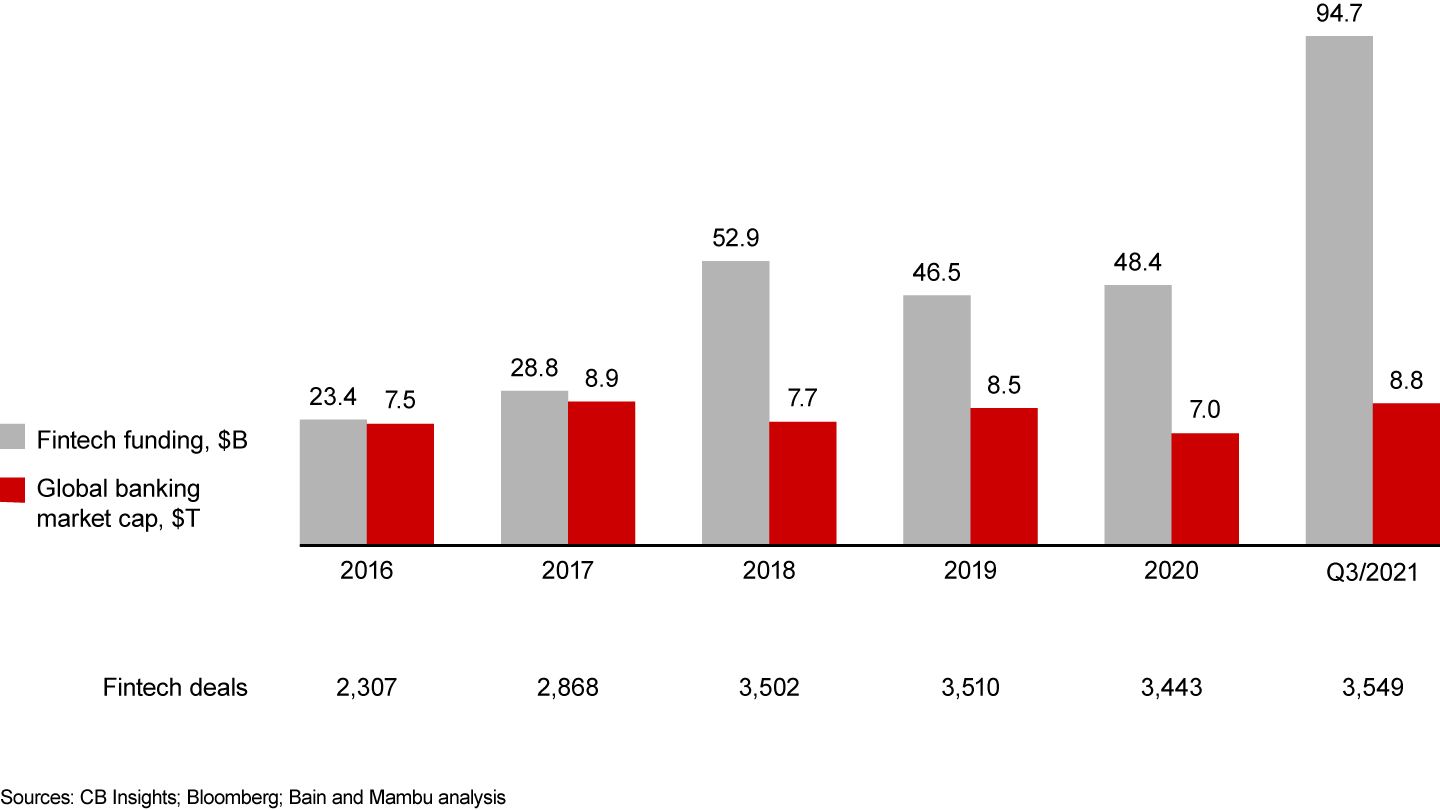
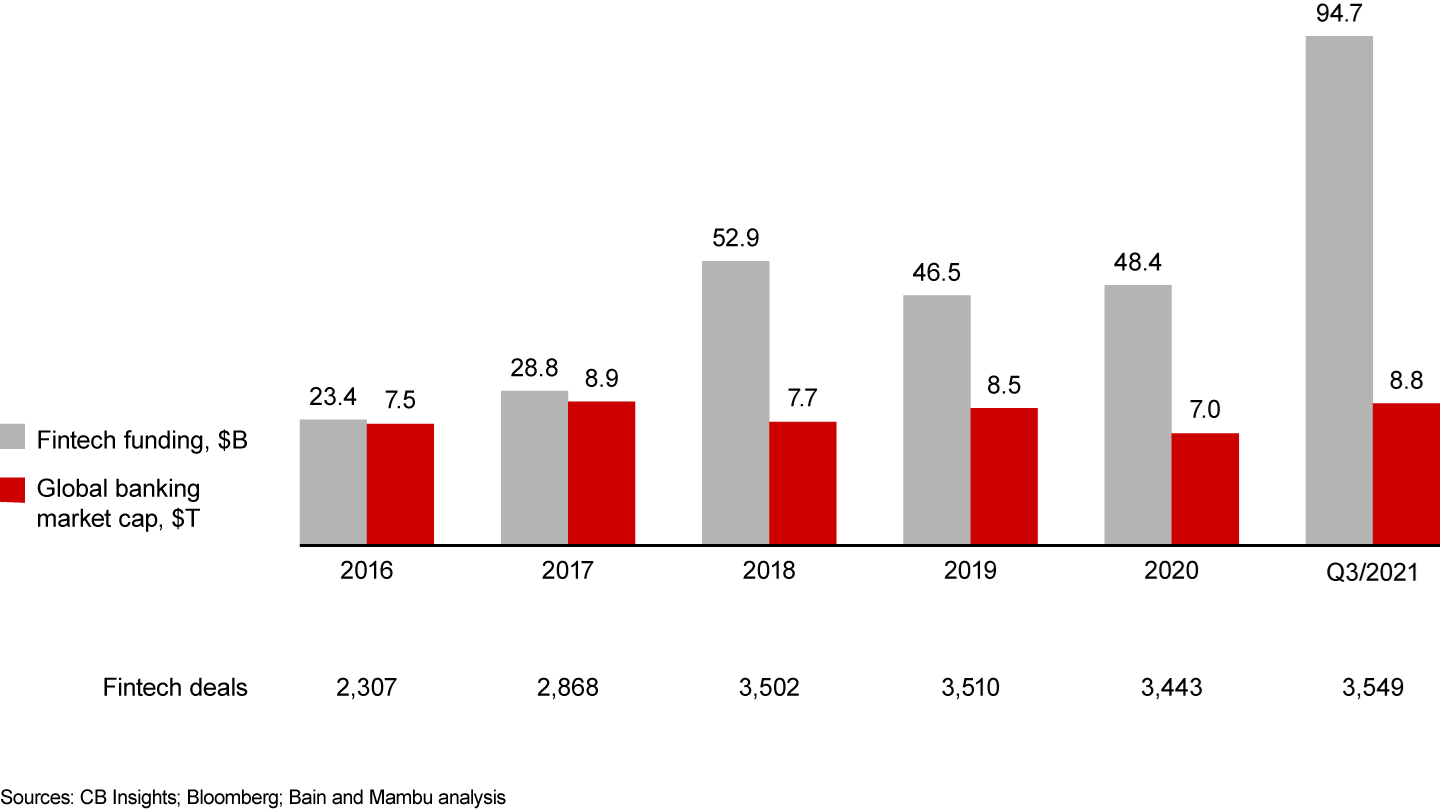
Banks’ new growth path: A five-step process
To compete with fintechs, we advocate a process that is firmly anchored in each bank’s unique business context and objectives (see Figure 2). While it is by no means a silver bullet to banks’ challenges, an increasing number of innovation leaders have adopted an agile approach to technology transformation that harnesses the power of high-impact micro-battles to rapidly win and scale customer-centric propositions.
By capitalizing on the agility and speed offered by “shared legacy” infrastructure—that is, the original core augmented with new cloud-based platforms—innovation leaders can deliver tangible results more quickly. Using this process, they can codify lessons learned from customer feedback, develop a repeatable model, and launch capabilities to leverage in other parts of the business.
We advocate an agile approach to technology transformation
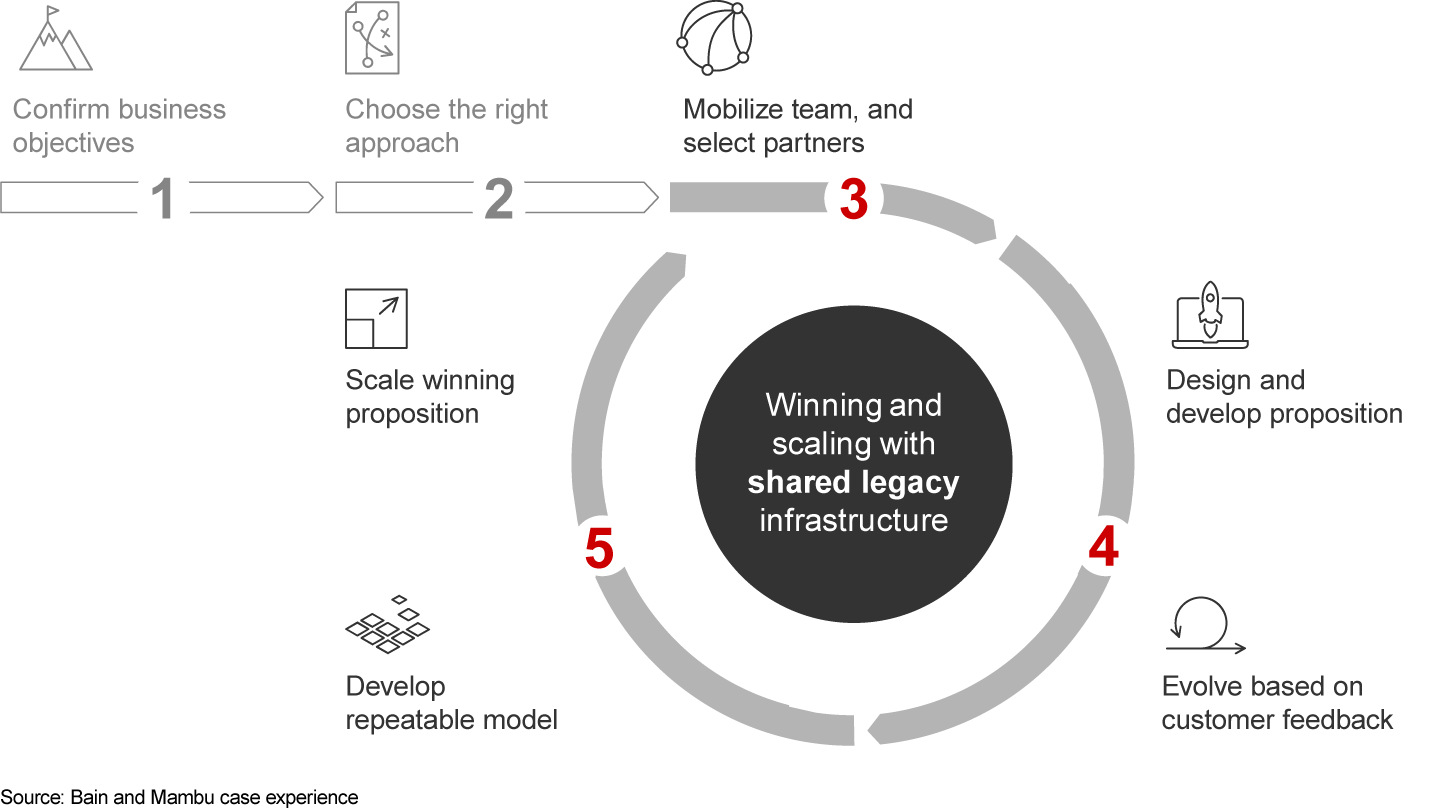
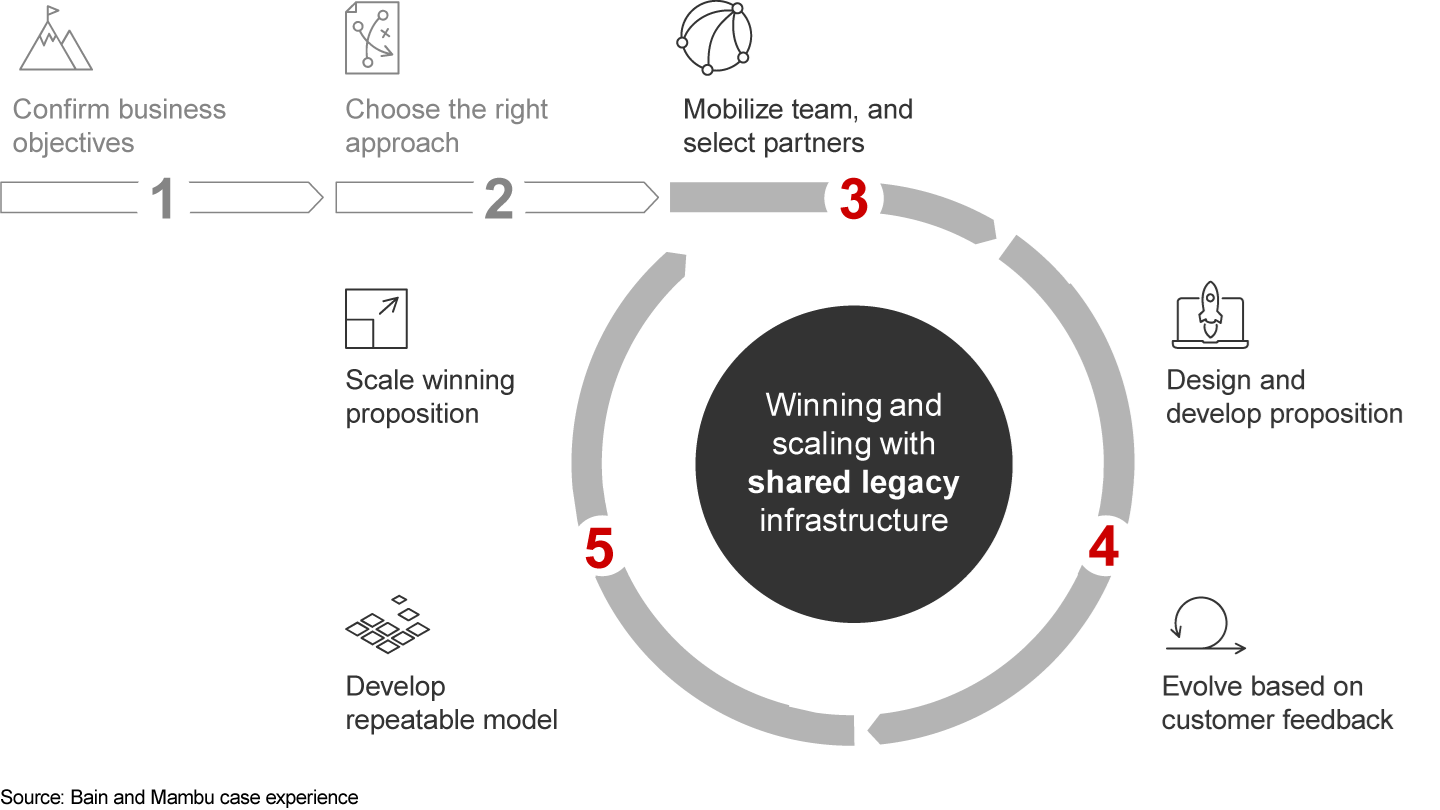
Business objectives: Achieving growth—one targeted segment at a time
Banks investing in technology—to the tune of $500 billion—are simply not seeing the desired ROI. The culprit may be a failure to tackle the initial steps shown above. Before even considering the technological solution, competitors are leading with business goals, applying a highly targeted, segment-focused go-to-market strategy. For example, fintech Wise (formerly TransferWise) grew out of its founders’ need to make international money transfers affordable and streamlined. In the last five years, it has gained approximately 10% market share in the $700 billion P2P market.
However, while offering highly personalized services may now be table stakes in this increasingly competitive landscape, incumbent banks must strike a fine balance. Targeting too widely could strain resources and limit their ability to keep pace with customers’ evolving needs. Instead, hyper-targeting allows them to strategically prioritize key segments. Once won, a target segment can be scaled up fast, providing a viable foundation for long-term growth, revenue, and service development. By focusing on segmented markets, banks can rediscover the nimbleness that drove their early growth while still leveraging their strong market positions and substantial resources.
The right approach: Modernized architecture, no reboot required
Whatever the segment battleground, from conversational banking to alternative lending, the race is on to be first to market with new, exceptional experiences. Winning—and keeping—customers is the name of the game.
Traditional banks looking to answer this call and capitalize on diversified growth opportunities are hemmed in by several interconnected legacy issues: complex IT infrastructure, technology debt, budget constraints, and resistance to change. Yet, their reluctance to rip and replace existing systems is understandable. Many of those processes and systems, built over decades, provide critical strategic differentiation.
In our experience, banks have taken four broad approaches to modernizing their architecture (see Figure 3). Choosing the right methodology hinges on the bank’s main impetus for change, whether it’s unsustainable costs, operational and regulatory risks, risk tolerance, or desire for innovation. Regardless of the method, it’s clear that incumbents can no longer afford to kick the can down the road.
We see four approaches to modernization, depending on bank’s point of departure
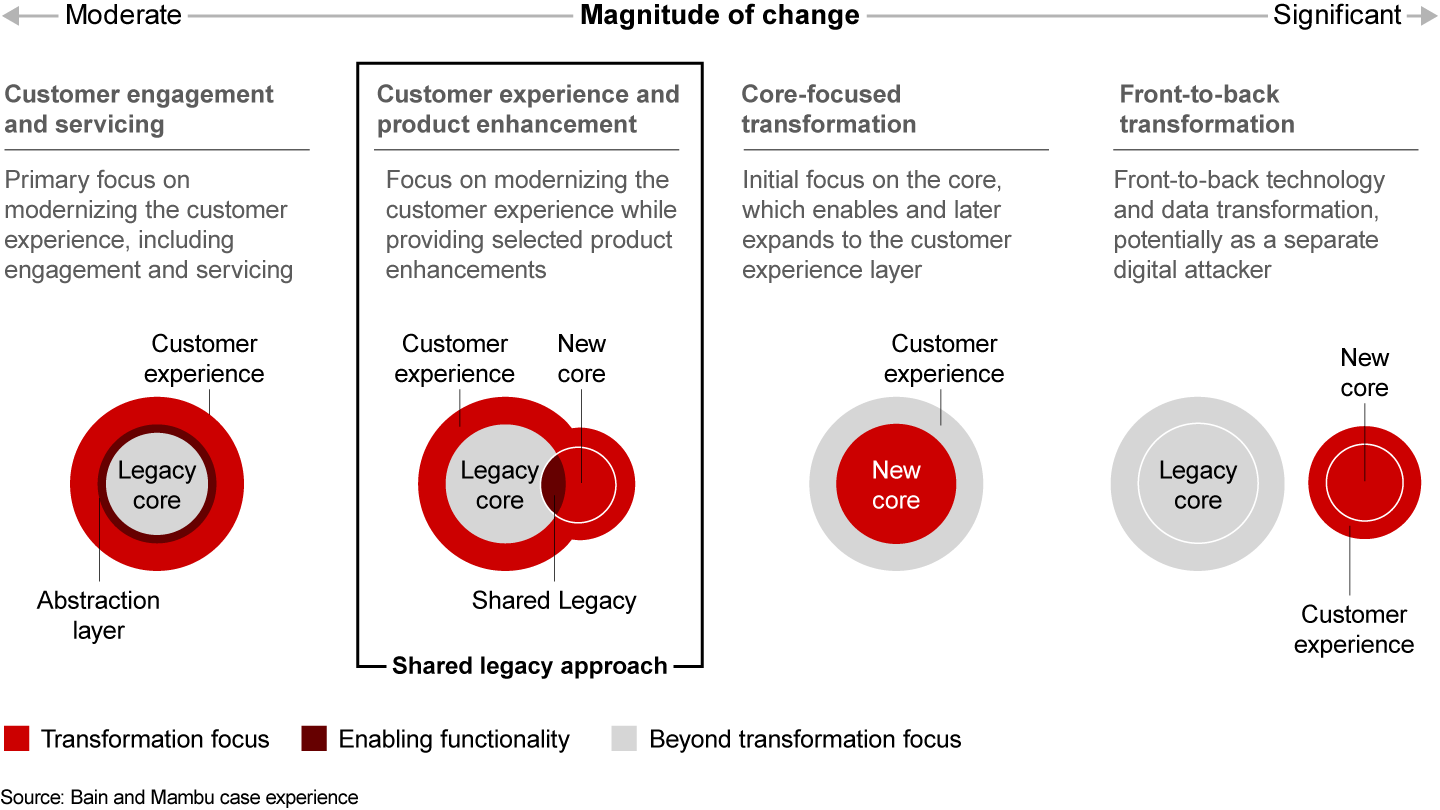
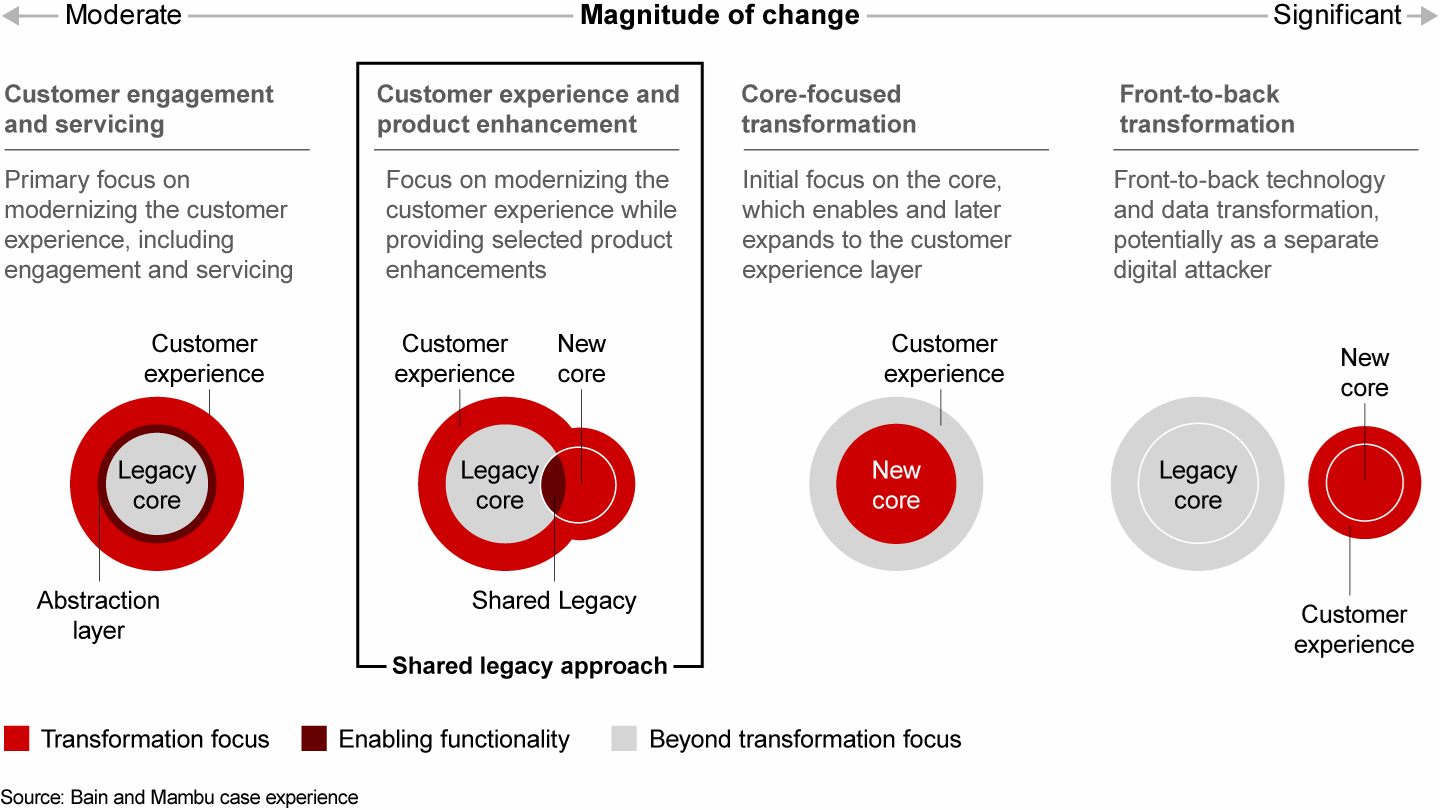
Some banks have opted to break free from cumbersome legacy platforms and launch separate digital attackers with a front-to-back transformation. But spinning off a subsidiary with an entirely new technology stack may not always be the simplest or most effective solution, especially for those banks with strong customer relationships. Instead, a shared legacy approach combines cloud-native digital platforms with banks’ existing digital capabilities to create a unified customer experience across different products and regions more easily and economically.
To carry brand trust into the digital realm, incumbents can take a page from banking as a service (BaaS). Adopting a BaaS model of digital transformation—using open cloud platforms, orchestration, and APIs—can help banks make the most of their existing investment and create specific solution architecture for a targeted audience, product, or geography. By leaving the legacy core as a system of record and then layering on software as a service (SaaS) solutions, banks can launch new products fast and stay in the game (see Figure 4).
A shared legacy approach helps banks efficiently launch new products
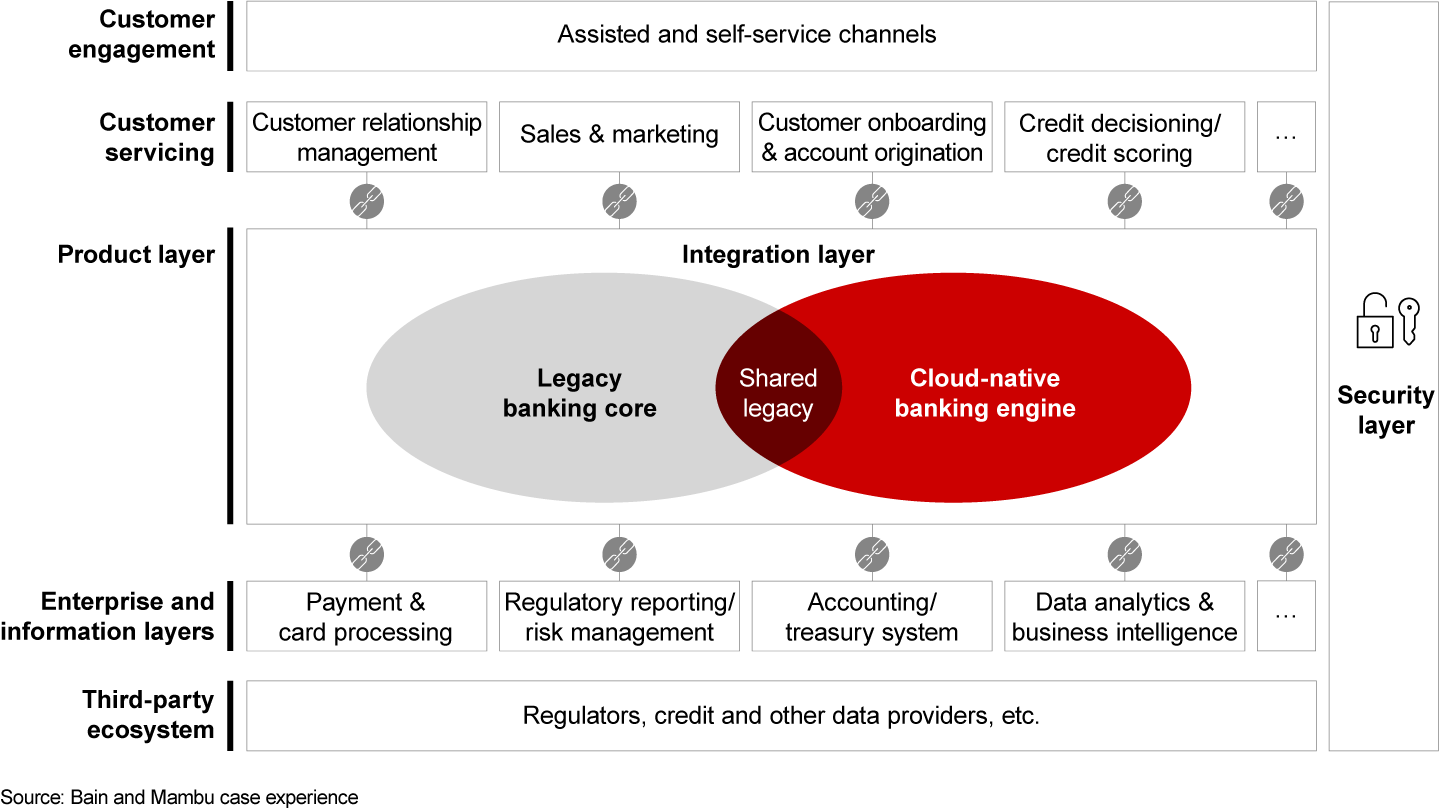
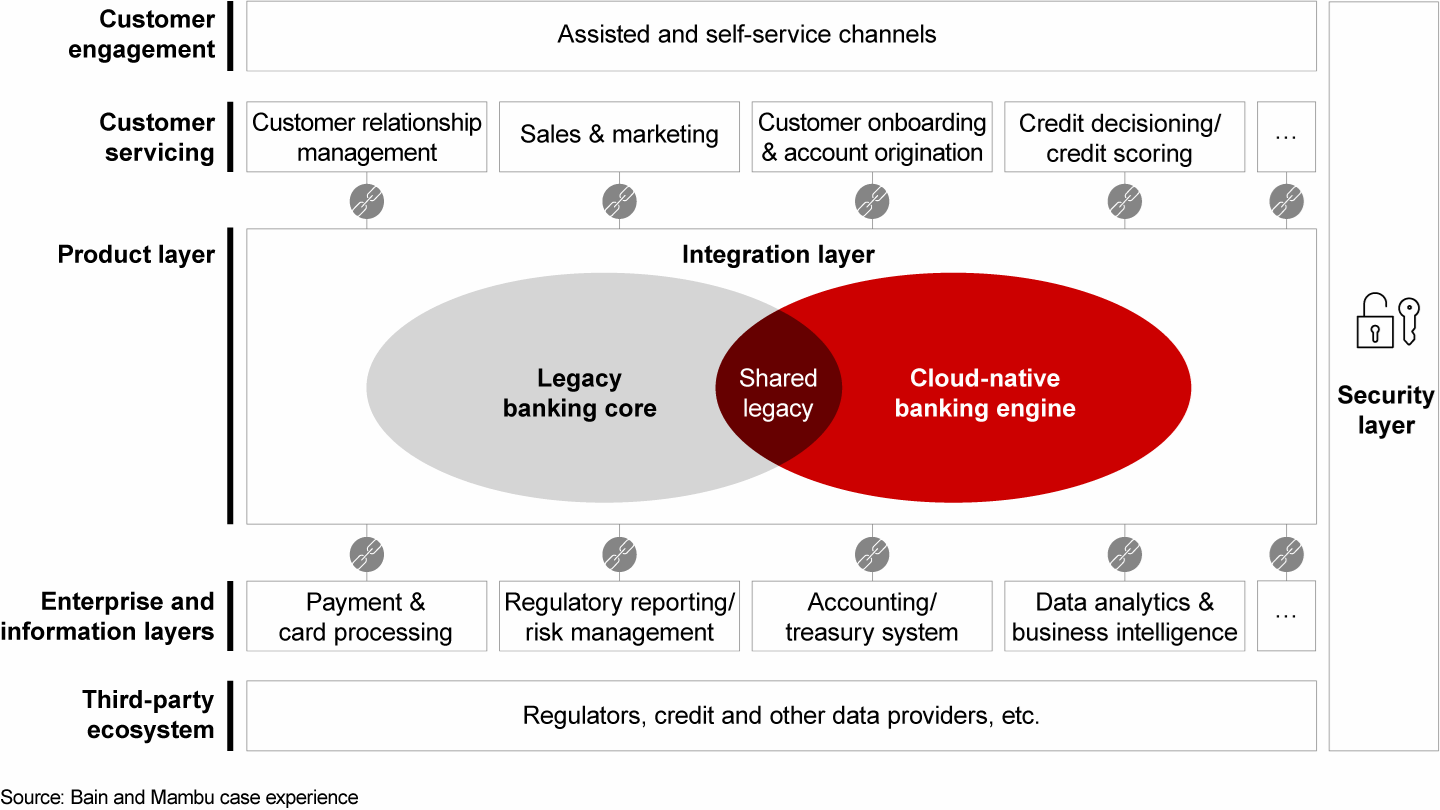
Examples of technology-enabled micro-battles abound. Take Amsterdam Trade Bank (ATB), a large European bank that transformed its business into a fintech in six months, focused on lending to small- and mid-size enterprises (SMEs), and expanded to the UK under the new brand FIBR. Another example is BancoEstado, one of the largest financial institutions in Latin America, which uses a cloud-native core banking platform to improve customer access to digital services. This approach enabled them to migrate 13 million customers to a shared legacy setup.
Winning and scaling: Best practices for customer-led technology transformation
Banking’s innovation leaders know that transformation can’t happen without a firm grasp of the market segments that will yield the greatest returns. This laser focus on customers, coupled with a sound strategy, paves the way for selecting the right approach and core banking solution. When leaders take the next step in partnering with a technology provider, they light the fuse—augmenting their existing strengths with new capabilities that help them reach those target segments.
Whatever the scale and scope of their transformation, banks should follow these tried-and-true principles:
Design for customers, not banks. A sound understanding of the market, including its most profitable segments, customer preferences, and how the competition stacks up, will reveal the biggest growth opportunities.
Plan for realistic outcomes. After establishing a viable business case, de-risk execution by identifying and mitigating potential roadblocks before the actual kickoff.
Build demand as well as products. Observe how leading banks have brought new products to market profitably and sustainably. Apply a test-and-learn approach and iterate through rapid customer feedback cycles.
Use scale as an advantage. A larger customer base means more feedback as well as more resources to develop and deliver value to customers and markets.
For banks with the biggest appetites for growth, the fastest route may be the one that starts with smaller steps. By using cloud-based banking platforms and a shared legacy approach, they can optimize their architecture to help them win and scale, one targeted segment at a time. By doing so, they can introduce more diverse, customer-centric services while creating a more responsive delivery model—one that can adapt quickly and build sustainable growth now and into the future.

About Mambu
Mambu is a leading SaaS cloud banking platform. Mambu’s composable approach means that independent components, systems, and connectors can be assembled in any configuration to meet business needs and end user demands.